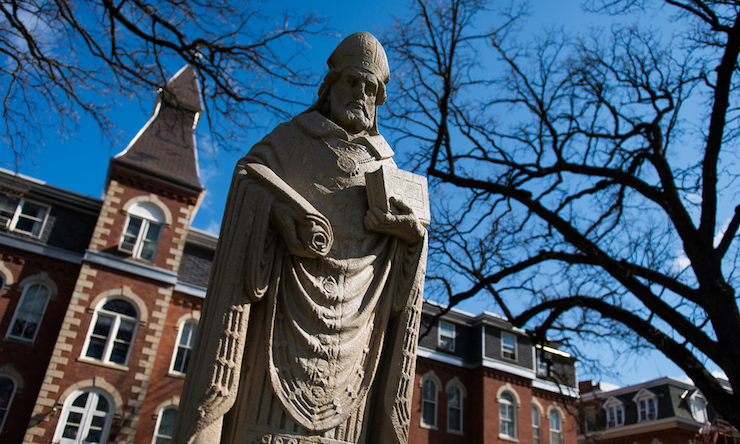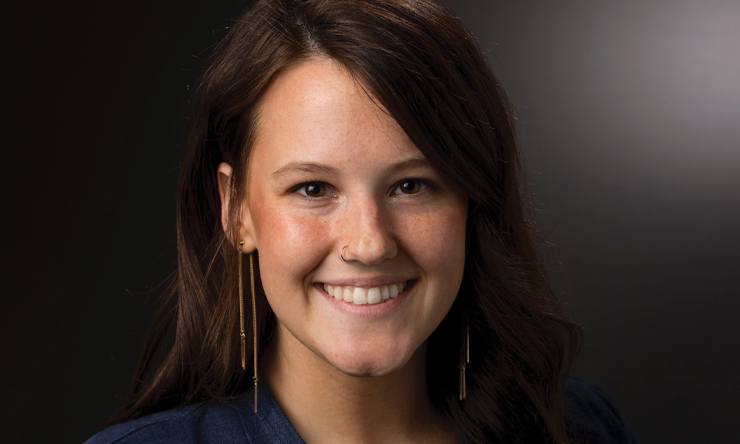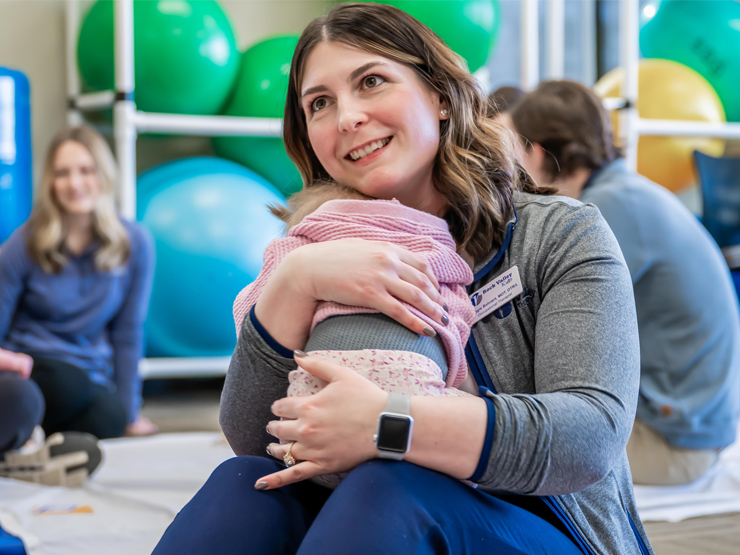By Rev. George McDaniel
There is a saying attributed to Lord Harold Samuel, a British real estate tycoon, "There are three things that matter in property: location, location, location."
In 1885 that was the situation facing the new bishop of Davenport, the Most Rev. Henry Cosgrove. Three years earlier while the pastor of the cathedral parish Cosgrove had given two rooms in the parish school to Bishop John McMullen to start a school. Now he knew that those two rooms were needed for the parish school and that if it was to grow, St. Ambrose would also need more room. So he began to look for a location for St. Ambrose.
Several sites were under discussion. One was near the reservoir located on Scott Street between Fifteenth and Sixteenth Streets (about three blocks south of Cosgrove Hall); another was an unspecified site in northeast Davenport. Cosgrove's choice was a site at Eighth and Ripley Streets (about ten blocks south of Franklin Hall). As the discussion proceeded, however, attention focused on a site on West Locust Street in an area known as Noel's Grove. What had formerly been a large tract of land covered with a grove of oak trees had by now been divided up among many land owner-developers.
The land for the proposed new St. Ambrose campus was a ten-acre tract owned by Henry G. Marquand of New York City. Marquand had purchased the land in 1855 from Adam and Susan Noel for $4,000, apparently as an investment.
Marquand was born in New York in 1819 and at an early age went to work in his family's jewelry business. When the business was sold he entered real estate, became a Wall Street banker, and made a fortune speculating in foreign currency exchanges and European railroads. He married well, built a mansion on New York's Madison Avenue, and retired to devote his life to art. He was among the founders of the Metropolitan Museum of Art and amassed a large art collection including portraits of himself and his wife, Elizabeth, by the American artist John Singer Sargent. He donated most of his personal collection including a Vermeer to the Metropolitan Museum.
The questions I could never answer was why did he buy ten acres of land in Davenport, Iowa? He had invested in European railroads but ten acres of Noel's Grove is not where a railroad was likely to be built. And then why did he hang on to that land for thirty years? Whatever the answer to those questions was, the ten acres were available and Cosgrove was interested.
Cosgrove knew Noel's Grove well since years earlier St. Marguerite's Parish held picnics there. But Cosgrove worried that the Locust Street site would be too far away for students to travel to and from school each day. However, Cosgrove set aside his reservations, and in April 1885, he purchased the ten acres from Marquand for $6,800. Marquand reportedly lowered the price from $12,000 because the land would be used for a religious institution.
The property was bounded on the south by West Locust Street, on the east by Scott Street, on the west by Western Street (approximately where the current driveway at the west end of Ambrose Hall is located) and on the north by High Street (approximately where the drive between Rohlman Hall and the Rogalski Center and along the front of the Christ the King Chapel is located). The purchase of the land and the subsequent building were made possible, in part, by using the $4,000 in gold that the priests of Chicago had given McMullen when he left Chicago and which he had saved for his school.Fr. A. J. Schulte, the first president of St. Ambrose remembered that the new campus "seemed out in the country" and the Catholic Messenger commented that the site was so big that the "students will enjoy all the quiet and comforts of country life." But it was hardly isolated.
There were houses on Gaines Street to the west and a few houses on Western to the north. Mercy Hospital was located a few blocks west on Lombard Street. There were no houses on Locust Street across from campus, but there were onion fields. There were houses on Locust Street east of campus and on Scott and Ripley Streets. Casper Fries had a wagon and blacksmith shop on the corner of Locust and Harrison. There were other businesses on Harrison Street south of Locust and a public school on Locust between Harrison and Main. Streetcars ran up Brady Street and stopped on Locust and another streetcar line went west from Brady on Sixteenth Street, two blocks south of Locust. Still, Locust was a deeply rutted mud street and, according to the Messenger, a "disgrace to the city," so bad that "four horses and a mule could not draw a baby cab along" the street. It pointed out that St. Ambrose and Mercy Hospital to the west would "add greatly to that section of the city, advance the price of property and increase population" and urged the city fathers to see that the street was improved.
In time that section of the city did build up. Houses lined Locust Street across from the campus and houses marched up both sides of Gaines Street. More homes were built north of campus until the students no longer enjoyed the "comforts of country life," but were in the middle of urban neighborhoods.
In time St. Ambrose began to add more land to the first ten acres. New buildings meant some of those houses along Gaines Street were razed to make room for Davis Hall in the 1920s and later the Library-Administration building. I wrote about one of those houses in a Spirit Day Message last fall. The last of the houses along Gaines Street came down when McCarthy Hall was built. However, some remnants remained of those houses and the lives their residents lived. The excavation underway for the addition to McMullen Hall unearthed a house foundation, a cistern, a well, and evidence of an outhouse.
Today St. Ambrose is located on a busy Locust Street on a campus that continues to grow to meet the educational needs of its students.
Share This Story




